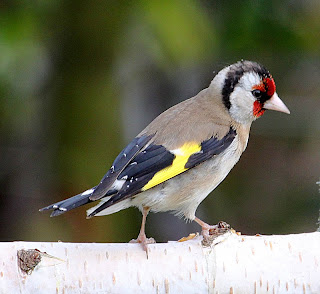I did a few jobs yesterday and combined it with the babysitting, so after the warm southerlies of the last few days and the arrival of July this morning I treated myself to a little birding. It started as an ordinary morning walk without too many expectations, then as often happens, the unexpected materialises, my familiar walk got more and more interesting until it finished with a special bird.
As I arrived at Lane Ends about 80 Curlew came off the inland fields, flew over the plantation and landed out on the marsh where they joined the autumn gang of 120 or so Lapwings. The walk up to Pilling Water proved uneventful with just the usual Skylarks for company as I cursed the early morning brightly clothed walkers for beating me to the pool again, but it was 9am I suppose.
Sat on the stile I noticed a scruffy looking Barn Owl hunting the fields and ditches alongside Fluke Hall Lane and the margins of Pilling Water. At that hour on a bright sunny it could only be hunting for food for youngsters, and I watched it for about 15 minutes alternately quartering the ground or sitting on the lookout fence posts. It was very scruffy, but I suppose I might be if I had been sat on eggs in the confines of a dark smelly box for some weeks. In actual fact there is nothing quite like the smell of an end of season owl box full of growing young with their left overs of discarded and rotting food items and sometimes the left overs of the smallest owl eaten a week or two before by its larger siblings.

Barn Owl Barn Owl
Barn OwlThat brightened my first hour or so before the owl flew off towards Fluke Hall, but it was so quiet I could hear a Whitethroat singing from the distant sewage works at Damside. Back at the sea wall end I noted 2 Common Sandpipers along the outfall and a lone Golden Plover, with 9 Pied Wagtails scattered across the marsh with small groups of Linnets that totalled up to a miserly 14 birds. A Meadow Pipit has started singing again at the junction of the sea wall there, and I am sure there is a nest close by as it let me approach it fairly close while calling to its mate. I noticed it had a ring on the right leg but it is more than a few years since I ringed any “mipits” just there, so I need either to carry a scope or catch the bird with meal worms to find out its place of ringing.

Meadow PipitA Grey Heron sat along the inland dyke where Swallows and House Martins fed. From the stile I was fairly certain that besides the local hirundines, other Swallows and House Martins were on the move south, with a single Sand Martin joining in the feeding out over the marsh, with Swifts noted here as going west and numbering 40, Swallows 70 and House Martins 30. The resident breeding Redshanks and Lapwings still protested at my presence even though they had obviously moved their young further out on the marsh, so I tried my hand at Redshanks photos again, but the results weren’t as good as a few days ago.

RedshankAt Lane Ends car park I dumped my heavy camera bag in the car to watch the seeming inactivity out on the marsh. As Lapwings and Starlings mixed in the summery length grass I waited to count them, concentrating instead on the numbers of Swifts flying at all heights but mainly heading west with more Swallows and extra House Martins. Something spooked the Lapwings and Starlings into the air “en masse”, the regular autumn/winter Merlin or Peregrine, but early I supposed. Then an adult Hobby came fairly slowly from the right along the sea wall in front of the mound, pursued and almost surrounded by complaining Swifts and Swallows, then disappeared behind the plantation with an entourage of twittering birds. By now I revised my morning count of Swift to 90, Swallow to 80 and House Martin to 45. My Starling count was 240, Lapwing 170. Hobby isn’t a major rarity here, in fact they do breed in Lancashire but it’s always a special day when one surprises you unexpectedly.

HobbyAlthough everything went quiet I waited for a while to see if the Hobby might reappear. After about twenty minutes the Lapwings, Starlings and hirundines spooked again as the Hobby came in from the direction of Fluke Hall at a much faster pace, did a Swift impression, then continued off towards Cockerham where I lost it in the sky.
That’s a good morning’s birding, and it was 1130 already. How time flies when we’re having fun.

























































.jpg)












